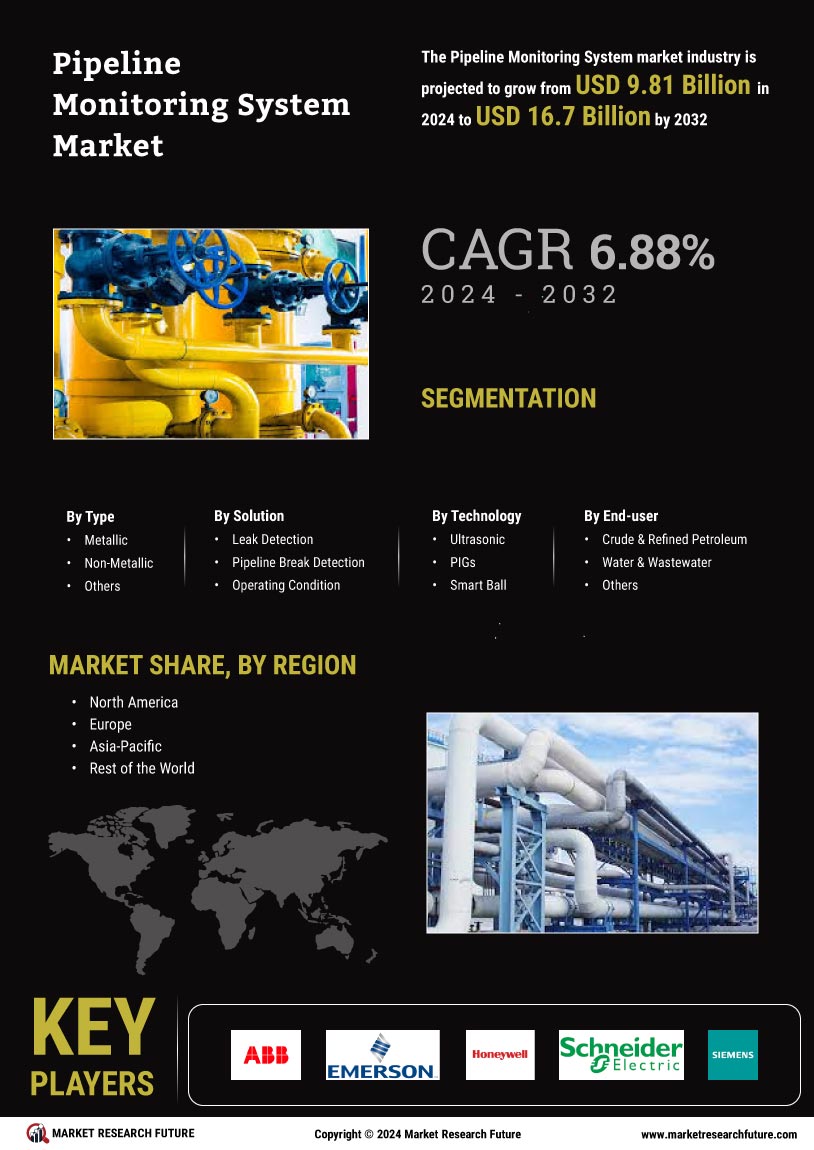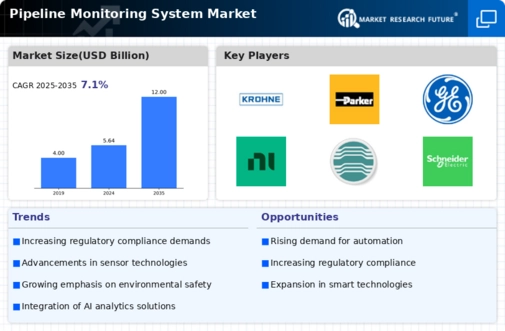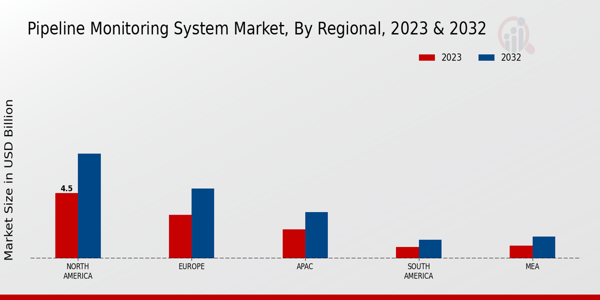Market Growth Projections
The Global Pipeline Monitoring System Market Industry is poised for substantial growth, with projections indicating a market value of 5.64 USD Billion in 2024 and an anticipated increase to 12.0 USD Billion by 2035. This growth reflects a compound annual growth rate (CAGR) of 7.1% from 2025 to 2035. The increasing focus on safety, regulatory compliance, and technological advancements are key factors driving this upward trend. As the demand for efficient and reliable pipeline monitoring solutions continues to rise, stakeholders in the industry are likely to invest in innovative technologies that enhance operational efficiency and safety.
Rising Oil and Gas Production
Rising oil and gas production is a crucial factor influencing the Global Pipeline Monitoring System Market Industry. As global energy demands increase, production levels are expected to rise, leading to an expansion of pipeline networks. This growth necessitates effective monitoring systems to manage the complexities associated with transporting hydrocarbons. For instance, the shale gas boom in the United States has resulted in extensive pipeline construction, highlighting the need for advanced monitoring technologies to ensure safe operations. The market's growth trajectory is closely linked to these production trends, as companies seek to implement systems that enhance operational efficiency and minimize risks.
Growing Demand for Safety and Security
The Global Pipeline Monitoring System Market Industry experiences a growing demand for enhanced safety and security measures. As pipeline infrastructure expands, the risk of leaks and ruptures increases, necessitating advanced monitoring solutions. Governments and regulatory bodies are emphasizing the importance of pipeline integrity, leading to stricter compliance requirements. For instance, the implementation of real-time monitoring systems can significantly reduce the response time to incidents, thereby minimizing environmental damage and economic losses. This trend is reflected in the projected market value, which is expected to reach 5.64 USD Billion in 2024, indicating a robust investment in safety technologies.
Regulatory Compliance and Environmental Concerns
The Global Pipeline Monitoring System Market Industry is significantly influenced by regulatory compliance and environmental concerns. Governments worldwide are enacting stringent regulations to mitigate the environmental impact of pipeline operations. Compliance with these regulations often necessitates the adoption of advanced monitoring systems that can provide real-time data on pipeline conditions. For instance, the U.S. Department of Transportation mandates that operators implement leak detection systems for hazardous liquid pipelines. This regulatory landscape drives investments in monitoring technologies, as companies seek to avoid hefty fines and reputational damage associated with non-compliance.
Technological Advancements in Monitoring Solutions
Technological advancements play a pivotal role in the Global Pipeline Monitoring System Market Industry. Innovations such as IoT, AI, and machine learning are transforming traditional monitoring systems into sophisticated platforms capable of predictive analytics and real-time data processing. These technologies enhance the accuracy of leak detection and pipeline integrity assessments. For example, the integration of drones and satellite imagery allows for comprehensive surveillance of extensive pipeline networks. As a result, the market is anticipated to grow at a CAGR of 7.1% from 2025 to 2035, reaching an estimated value of 12.0 USD Billion by 2035, reflecting the increasing reliance on advanced monitoring technologies.
Increasing Investment in Infrastructure Development
Increasing investment in infrastructure development is a key driver of the Global Pipeline Monitoring System Market Industry. As countries focus on enhancing their energy infrastructure, the demand for efficient and reliable pipeline systems rises. This trend is particularly evident in emerging economies, where significant investments are being made in oil and gas transportation networks. For example, the expansion of pipeline networks in regions like Asia-Pacific and the Middle East necessitates robust monitoring solutions to ensure operational efficiency and safety. Consequently, this surge in infrastructure projects is expected to propel the market forward, creating opportunities for innovative monitoring solutions.






















